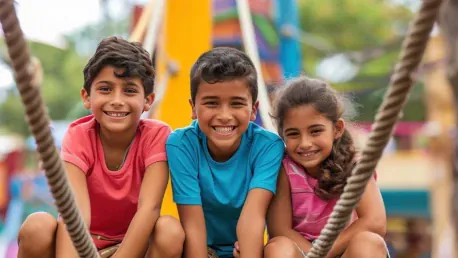The Queensland government’s move to amend the current Youth Justice Act has ignited a firestorm of controversy, as it seeks to remove the principle that juvenile detention should be a measure of last resort. Introduced by the Labor government in May under the Community Safety Bill, these legislative efforts have been met with significant opposition. Critics argue that these changes could seriously undermine both domestic and international human rights standards aimed at protecting the welfare of children.
Potential Breach of Human Rights
The Balance Between Legislation and Human Rights
One of the major concerns raised by critics and legal experts is that the proposed amendments could violate children’s fundamental human rights. Although the government claims that the bill does not engage human rights, a parliamentary committee report contends otherwise. The report underscores that the amendments could potentially breach both Queensland’s Human Rights Act and international conventions, especially those that emphasize that the detention of children should be a last resort and for the shortest period. The United Nations convention mandates that alternative options must be prioritized before resorting to detention.These claims are backed by several advocacy groups and legal organizations, including the Aboriginal and Torres Strait Islander Legal Service and the Youth Advocacy Centre. These groups argue that the removal of the last-resort principle for juveniles contradicts the essence of safeguarding vulnerable populations. They stress that the amended act could lead to unnecessary or prolonged detention of children, ignoring less severe, rehabilitative alternatives that could better serve both the individuals and the community.
Community Safety vs Children’s Rights
The core of the parliamentary committee’s debate lies in balancing the need for community safety with the inherent rights of children. The legislative amendments, while aimed at strengthening community safety, might inadvertently lead to the erosion of children’s fundamental rights. This sentiment is particularly troubling, given Queensland’s history of legislative actions within the last two years that have already limited children’s rights. Previous laws making breach of bail a criminal offense and the allowance of holding children in adult facilities are cited as examples. These actions are widely viewed as steps backward in the context of children’s rights and justice.The committee’s recommendation to pass the bill, despite acknowledging potential human rights infringements, highlights this balancing act. The committee argues that community safety concerns sometimes necessitate tougher measures, but this view is far from unanimous. Opposition members have even pushed for stricter measures, challenging the committee’s already contentious stance. This divergence in opinion showcases the complexity of legislating justice while ensuring both the community’s safety and the protection of vulnerable children.
Advocacy and Community Response
Strong Opposition from Advocacy Groups
Several advocacy groups have raised their voices against the proposed amendments. Organizations like the Queensland Council of Social Service have been at the forefront of critiquing the government’s approach. They argue that the changes in the Youth Justice Act could disproportionately affect children from impoverished or violent backgrounds, as well as those with disabilities or cognitive impairments. These groups claim that the government’s changes prioritize political gains over the welfare of vulnerable populations, leading to adverse long-term effects on those least able to navigate the system.The Aboriginal and Torres Strait Islander Legal Service has highlighted that the amendments could particularly harm Indigenous children, who are already overrepresented in the juvenile justice system. These community leaders argue that the government needs to address root causes such as poverty, lack of education, and social services, instead of increasing the punitive measures. They believe that restorative and rehabilitative justice approaches could yield better outcomes for both children and society at large, compared to harsher detention policies.
Concerns of the Human Rights Commissioner
Queensland’s Human Rights Commissioner Scott McDougall has expressed significant apprehensions regarding the diminishing respect for children’s rights, especially with the state election looming. He criticized the lack of transparency surrounding the legal advice that formed the basis for the bill, which was not made public. This opaqueness raises questions about the motivations behind the legislative changes and whether they genuinely aim to improve community safety or serve political agendas. McDougall’s concerns add weight to the opposition against the proposed changes and emphasize the need for a more transparent, accountable legislative process.The lack of open dialogue and full disclosure around the bill’s legal foundations has further deepened mistrust among advocacy groups and the public. It highlights the need for greater scrutiny and community involvement in legislative processes that have significant implications for human rights. Transparency and open consultation would not only improve trust but also ensure that any amendments to the Youth Justice Act are balanced, just, and in the best interest of the children and the community they aim to protect.
Conclusion
The Queensland government’s recent decision to amend the existing Youth Justice Act has sparked significant controversy, primarily because it aims to eliminate the principle that juvenile detention should be considered only as a last resort. This legislative amendment, introduced by the Labor government in May under the Community Safety Bill, has faced substantial opposition from various quarters. Critics contend that these changes could gravely impact both domestic and international human rights standards that are designed to protect children’s welfare. They argue that removing this critical safeguard could expose children to undue harm and risk, potentially leading to higher rates of juvenile incarceration without exhausting all other alternatives. Human rights advocates emphasize that the amendment compromises efforts to uphold justice and rehabilitation for young offenders. These experts insist that juvenile detention should remain a last resort, aligned with global practices focused on correction and reintegration into society, rather than punishment. The ongoing debate underscores the complexity of balancing community safety with the imperative to protect the rights and future of young individuals.









